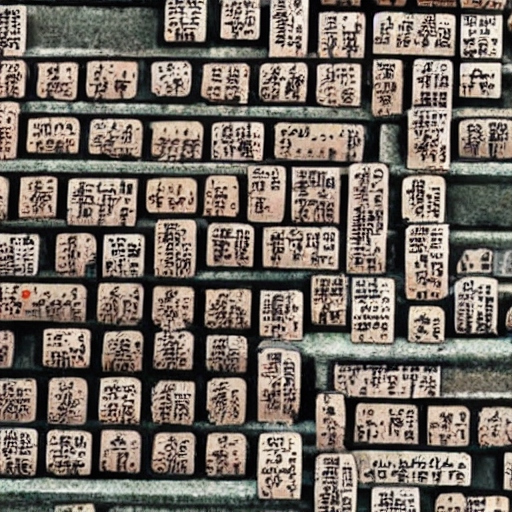The advent of machine translation tools has revolutionized the translation industry, providing faster and more cost-effective translation solutions. However, while these tools have made significant advancements in recent years, they often fall short in terms of accuracy, context, and cultural sensitivity. This is where post-editing comes into play – the process of refining and correcting machine-generated translations to ensure optimal quality and accuracy. In this article, we will delve into the challenges faced by translators in the post-editing process and explore strategies for successfully navigating these complexities.
Understanding Machine Translation Limitations
Before discussing the challenges of post-editing, it is essential to understand the limitations of machine translation tools. While these tools have become increasingly sophisticated, they still struggle with various aspects of language and translation, such as:
- Idiomatic expressions and cultural nuances: Machine translations often fail to accurately capture idiomatic expressions, proverbs, or culturally-specific references, leading to potential misunderstandings or loss of meaning.
- Syntax and grammar errors: Machine translations can produce grammatically incorrect or awkward sentences that do not adhere to the syntax rules of the target language.
- Ambiguity and context: Machine translation tools can misinterpret the context or fail to recognize ambiguities in the source text, resulting in inaccurate translations.
- Inconsistencies: Machine translations may produce inconsistent translations of terms or phrases, particularly when they appear in different forms or contexts within the source text.
- Terminology: Machine translations may not always use the appropriate industry-specific or technical terminology, leading to confusion or misinterpretation.
- Tone and style: Machine translations may not capture the intended tone or style of the source text, resulting in translations that sound unnatural or fail to convey the author’s voice.
Challenges in Post-Editing Machine Translations
Given the limitations of machine translation tools, translators face several challenges during the post-editing process:
- Identifying and correcting machine translation errors: Translators must be able to identify various types of errors in the machine-generated text, such as inaccuracies, inconsistencies, or awkward phrasings, and make the necessary corrections.
- Balancing speed and quality: Post-editing often involves a trade-off between speed and quality. Translators must work efficiently to meet deadlines while ensuring that the final translation meets the required standards of quality and accuracy.
- Assessing the overall quality of the machine-generated output: Translators must evaluate the overall quality of the machine translation to determine the level of editing required, which can range from light editing to a more comprehensive overhaul.
- The risk of overconfidence in machine translation quality: If the machine translation appears to be of high quality, translators may be tempted to rely too heavily on the machine-generated text and not pay enough attention to potential inaccuracies or subtle nuances.
Strategies for Successful Post-Editing
To overcome these challenges and ensure successful post-editing outcomes, translators can adopt several strategies:
- Approaching post-editing with a critical mindset: Translators should thoroughly review the machine-generated text and not rely solely on its perceived quality. This involves carefully examining the translation for accuracy, context, cultural nuances, tone, and style, and making any necessary corrections or adjustments.
- Developing a systematic post-editing process: Establishing a structured and consistent post-editing process can help translators work more efficiently and effectively. This can involve creating checklists or guidelines to ensure that all aspects of the translation are reviewed and revised as needed.
- Collaborating with other translators or subject matter experts: Working with colleagues or experts in the field can help translators identify and address potential issues in the machine-generated text. Collaboration can also lead to the sharing of best practices and insights, further enhancing the post-editing process.
- Staying up-to-date with advances in machine translation technology: As machine translation tools continue to evolve, it is essential for translators to stay informed about the latest developments and improvements. This can help them better understand the capabilities and limitations of these tools and adjust their post-editing strategies accordingly.
The Future of Post-Editing and Machine Translation
As the translation industry continues to evolve, the role of human translators in the age of AI will likely change as well. However, the ongoing need for skilled post-editors to ensure translation quality and accuracy remains crucial. Some key aspects of the future of post-editing and machine translation include:
- The evolving role of human translators: As machine translation technology improves, human translators may increasingly shift their focus from translating entire texts to refining and perfecting machine-generated translations. This will require translators to develop new skills and strategies for post-editing.
- The potential for improved machine translation quality over time: As AI and machine learning technologies continue to advance, the quality of machine translations is likely to improve, potentially reducing the need for extensive post-editing. However, human expertise will still be required to ensure that translations accurately capture the nuances of language and culture.
- The ongoing need for skilled post-editors: Despite advances in machine translation technology, the role of human post-editors remains vital in ensuring the accuracy, cultural sensitivity, and overall quality of translations. Skilled post-editors will continue to be in demand as the translation industry evolves and embraces new technologies.
Conclusion
Navigating the challenges of post-editing machine translations requires a combination of linguistic expertise, cultural understanding, and the ability to critically assess and refine machine-generated output. By adopting a critical mindset, developing systematic processes, and collaborating with others, translators can successfully tackle these challenges and produce accurate, high-quality translations.
As the translation industry continues to evolve and embrace AI technologies, the role of human translators will undoubtedly change. However, the need for skilled post-editors to ensure translation quality and accuracy remains essential. By staying informed about advances in machine translation technology and continuously honing their post-editing skills, translators can ensure their ongoing relevance and success in the ever-changing world of translation.

